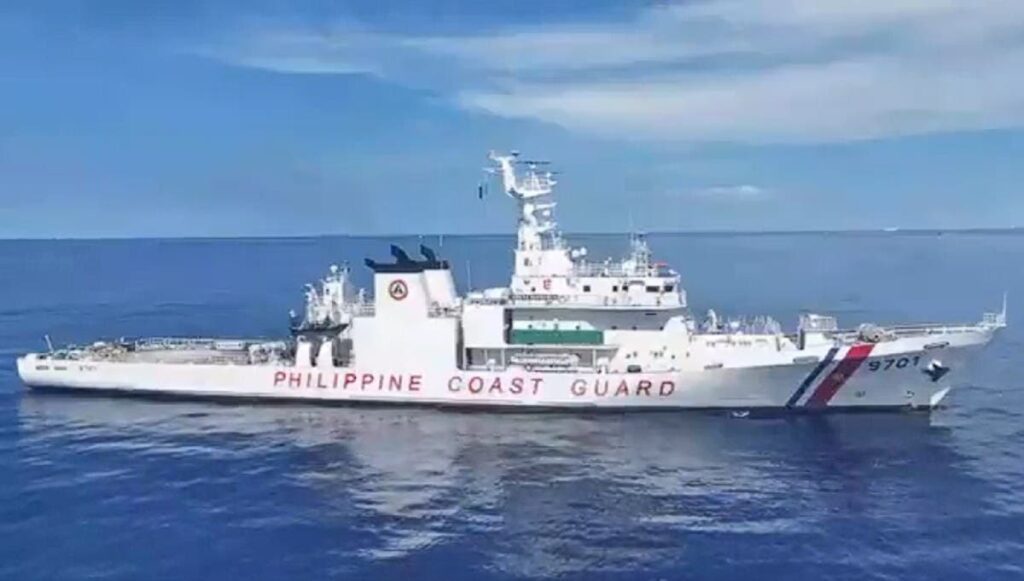
UPDATE: Tensions escalate as China has deployed naval assets to obstruct a Philippine government supply mission near contested features in the South China Sea. The Philippine Coast Guard reported the incident on October 13, 2025, highlighting a troubling confrontation that underscores the region’s volatility.
China’s aggressive maneuvers come as Manila continues to assert its rights in the face of Beijing’s expansive territorial claims, which encompass nearly the entire South China Sea—an essential waterway for global trade. The area is vital for the Philippines, a key U.S. ally, and any confrontations directly impact local fishermen and the broader security landscape.
According to coast guard spokesperson Jay Tarriela, approximately ten Chinese coast guard ships and an equal number of vessels from China’s “maritime militia” attempted to block a convoy tasked with delivering vital supplies, including fuel and groceries, to local fishermen near two highly disputed areas: Sabina Shoal and Scarborough Shoal. Tarriela described the encounters as “tense” and marked by “dangerous maneuvers and blocking actions” from the Chinese forces.
In a stark display of intimidation, Chinese vessels reportedly used water cannons against Filipino fishermen, a tactic that has increasingly characterized confrontations at sea. Tarriela revealed that this latest incident is part of a broader pattern of escalating hostility, noting that a People’s Liberation Army Navy helicopter was spotted near Scarborough Shoal during the standoff.
Despite the aggressive tactics employed by China, the Philippine supply mission was ultimately successful, delivering supplies to nearly 100 fishing vessels and facilitating the purchase of 30 tons of fresh fish, according to Tarriela. However, this achievement comes amid heightened tensions and accusations from China’s coast guard against Manila for purportedly violating an “environmental reserve” over Scarborough Shoal, a claim that has drawn protests from both the Philippines and Washington.
The growing presence of Chinese naval forces marks a significant escalation in the ongoing territorial disputes. Analysts have noted a shift from China’s reliance on coast guard and maritime militia to more overt naval operations that increase the risk of armed conflict. Recently, a collision involving a Chinese navy destroyer and a coast guard ship during a confrontation with a Philippine vessel resulted in severe damage and reportedly left two Chinese crew members deceased.
In response to these developments, Admiral Ronnie Gil Gavan, head of the Philippine coast guard, reaffirmed his commitment to protecting Filipino fishermen, stating, “My top priority is to safeguard their livelihoods from any interference by the China Coast Guard.” He emphasized the resolve of the Philippines to defend its sovereign territory against foreign encroachment.
The situation remains fluid, with both sides showing no signs of backing down. As maritime tensions intensify, the role of China’s navy in future standoffs will be closely monitored. The international community watches with concern as this conflict over disputed waters continues to unfold, raising questions about regional stability and the implications for global trade routes.
As this story develops, readers are urged to stay informed on the latest updates regarding the situation in the South China Sea.






